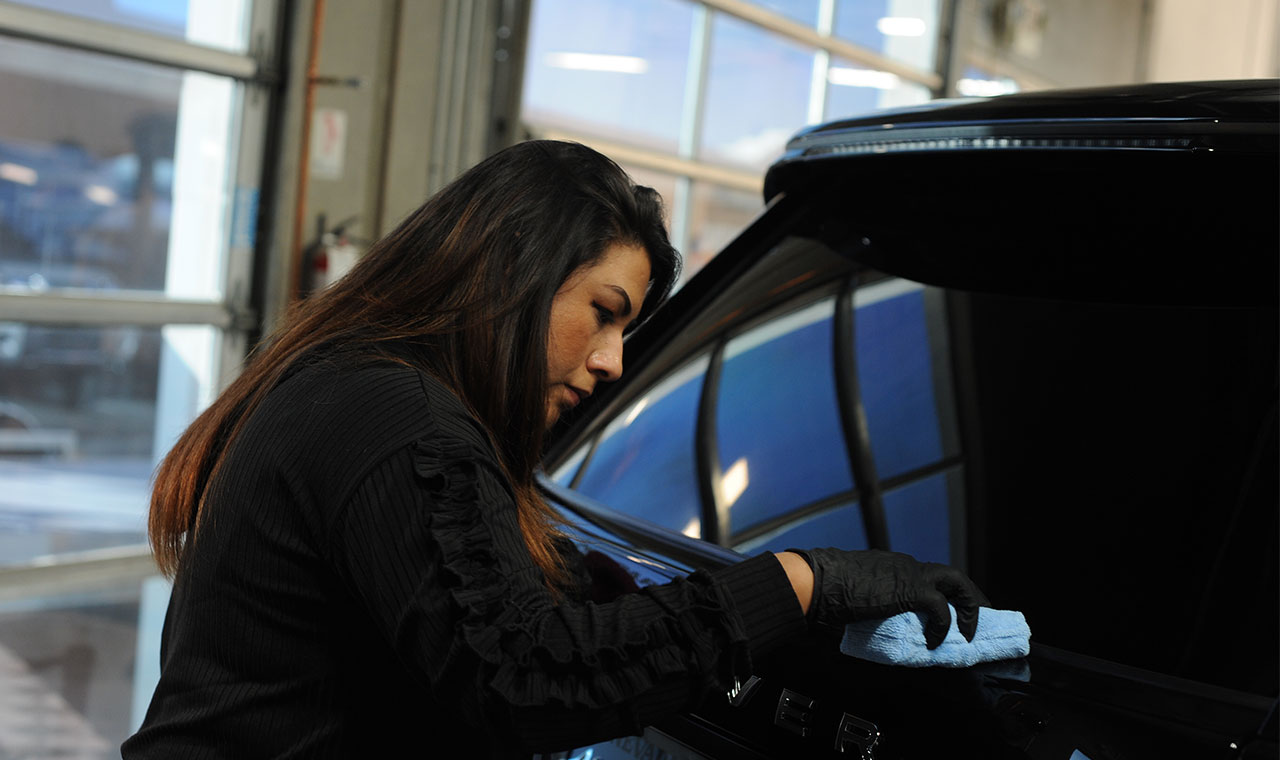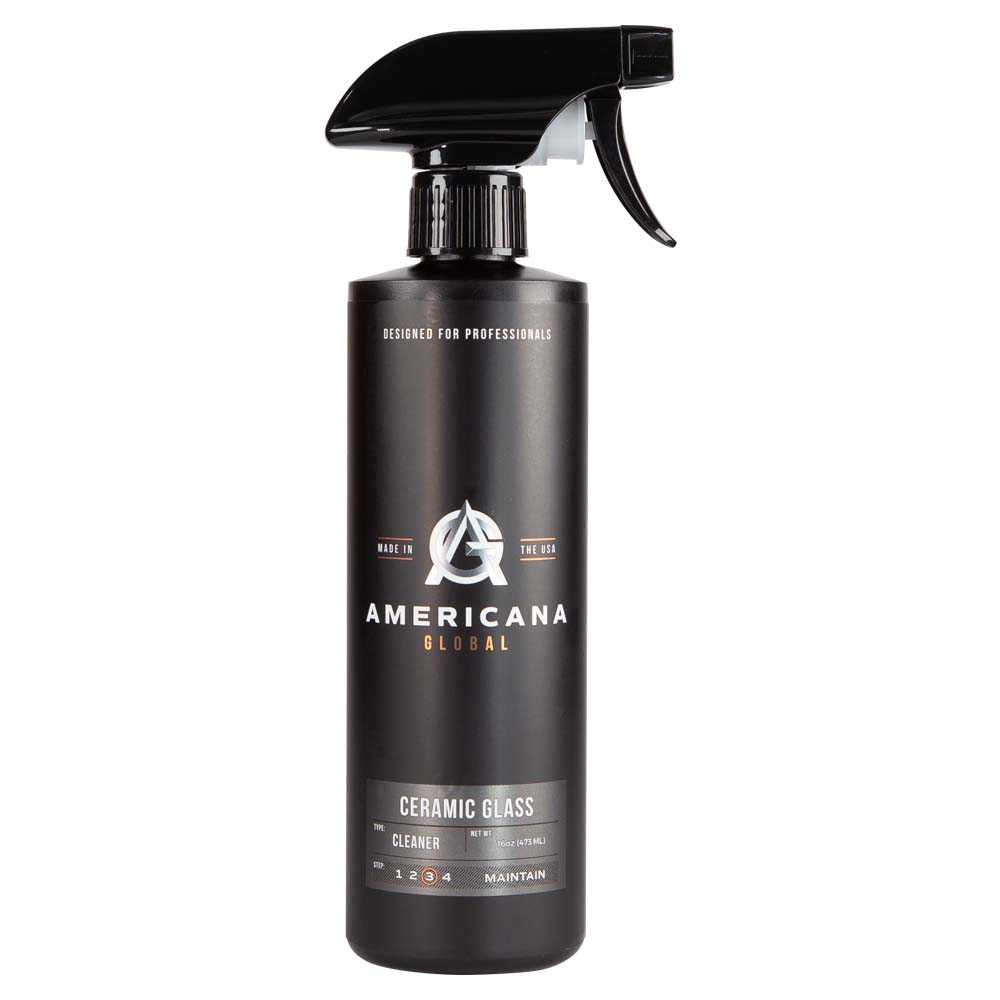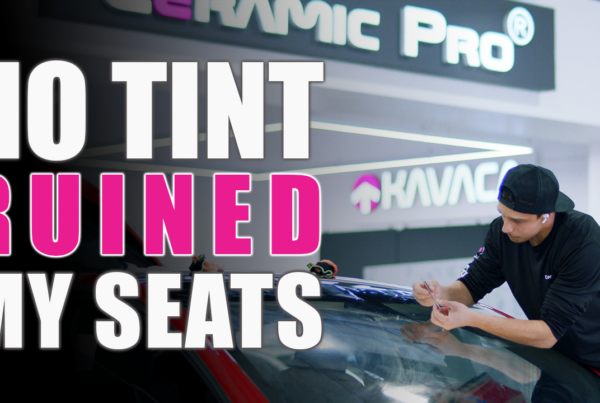Keeping your car windshields clean not only increases your visibility, but also makes your driving safer during your day/night commute. There are different types of glass cleaner on the market today, so how do you find which one is best for you?
Removing those pesky streaks and outdoor residue will no longer be a hassle – if you follow a proven method on how to correctly clean your car windows. In the information below, we will give you the top 3 car window cleaning tips and tricks to keeping your glass surface free of debris and without streaking.
Tip #1 – Determine Which Supplies are Best for You?
Long ago, people thought that the best method of cleaning a windshield was to use newspaper and water. The soy ink found in these newspapers provided a stainless material and eco-friendly alternative to car care products, but not all newspapers are made of soy byproducts.
The problem with this old-school technique breaks down to some of the variables. If you account for the harsh surface of newspaper, and the different ink solutions used to print these papers, scratching on a window was probable. Though this method was widely accepted during that era, the times have changed and there are better and safer methods of cleaning a car’s windshield.
With the development and improvements made in car care technology, we can get a better and safer result now for your vehicle. Now the big question, what factors come into play when choosing a window cleaner for your vehicle?
Here is a general but effective cleaning tip, look at the label.
You might be confused as to where I am getting at, but labels can tell you a lot about the cleaner itself. Products with tint-safe labels are ammonia-free which does not damage tint when applied to a window’s surface. Other types of glass cleaner contain ammonia which can cause damages to a tinted window and leave hard-to-remove streaks.
In the end – this isn’t a very efficient way of cleaning a window – is it?
Below are some supplies and factors to consider when detailing to make your next job a lot smoother.
 1.Types of Glass Cleaner
1.Types of Glass Cleaner
- Spray-on Glass Cleaner: Ammonia-free, these are generally tint safe window cleaners. They spray on like water and wipe off very easily. These are your go to cleaners when looking for something safe and effective.
- Foaming Glass Cleaner: Contains ammonia, these are not tint safe, meaning they can result in damages if your car windows have been tinted. They are usually indicated as a spotless window cleaner and can be used if your windows have not been tinted.
2.Types of Towels
- Waffle Weave Towel: These are a low absorbent towel that works best with a moderate amount of cleaning solution. It is made for fine details to clean your windows and used for the final touches of a window’s wipe down. It has a waffle pattern in its stitching that helps leave a streak-free finish. Use this towel with light sprays of window cleaner for the best possible results.
- Glass Microfiber Towel: This is the second, or final step in the glass cleaning process. It is a very thin, ultra-soft microfiber towel – like velvet in texture. It’s designed to act like a glass cleaning cloth you’d use for removing debris and smudges from your eyeglasses.
In a perfect world, you want to use a combination of both types of towels. Use your microfiber cloth to wipe down any dirt and grime left after your wash – then take your waffle weave towel to finish the fine details on the car windshield to leave a spotless finish.
Tip #2 Window Cleaning Techniques
Cleaning car windows may seem simple enough, so why are you still getting streaks after washing your car? Cleaning windows are not always just about the microfiber cloth and glass cleaner. It mainly falls into your understanding of techniques when doing this job.

In this case, less is more.
The less window cleaner you use the better your overall result. Do not drench your waffle weave towel with car window cleaner. Instead, spray a light amount and apply the solution evenly throughout the surface.
These towels are designed best to help buff out those annoying streaks. When cleaning your vehicle’s windows, you want to spray the cleaning solution onto a clean microfiber towel before wiping to prevent overspray.
The biggest factor that causes streaks and spots is the sun. While washing your car under the sun, the temperature of your vehicle heats up and causes your cleaning product to prematurely dry. This, in turn, leaves streaks when wiping down your glass.
Pay attention to where you are washing your car, a cool surface can make all the difference when cleaning your car window.
A helpful tip to keep your next windowing cleaning job streak-free is to take your car and park it in a shaded area or garage an hour beforehand.
Extra Tip* Make sure to lift your front and rear window wipers to get the residual water from under your wiper blade and lower section of your windshield. This will help prevent water spots from forming keeping your car’s windshield cleaner.
Tip #3 Installing Ceramic Pro Glass
After spending all that time and effort cleaning your windows, investing in different types of auto glass cleaner and microfiber rag, you want to make sure that it stays clean for as long as possible.
What better way to protect your windshields than with ceramic coating?
Ceramic coating has been proven to be one of the leading solutions to keep your investment in tip-top shape. The coating will fill in the pores of the window creating a hydrophobic and smooth surface on the glass.
Ceramic coating your windshields not only keeps them cleaner for the long run but also makes your glass easier to clean in the future. The problem is – with so many DIY ceramic coatings on the market today, many car owners are confused as to which one is best for their individual application.
If you’re a DIY enthusiast, consider using an SiO2-infused glass cleaner. A product like Americana Global Ceramic Glass Cleaner is not only TINT SAFE – but has a tiny amount of protective coating – that will bond directly to your windshield.
If you would prefer to have a longer-lasting, professional-grade, glass-specific nano coating, consider Ceramic Pro Glass. To receive an estimate to have one of our 3,500 certified installers coat your glass – click the button below.


 1.Types of Glass Cleaner
1.Types of Glass Cleaner





